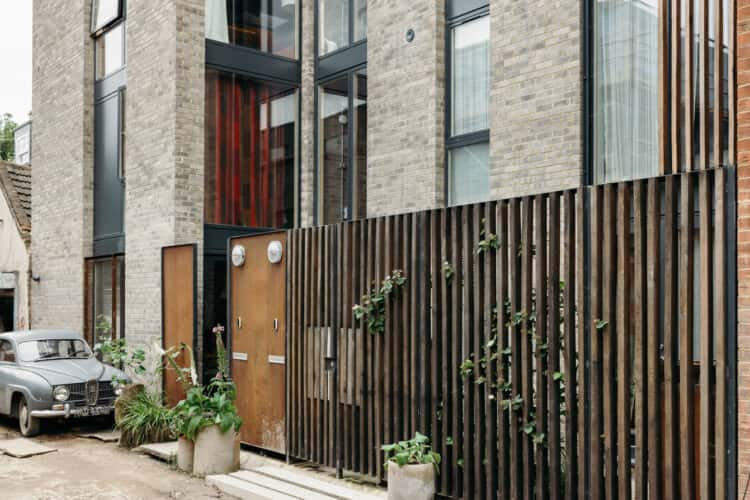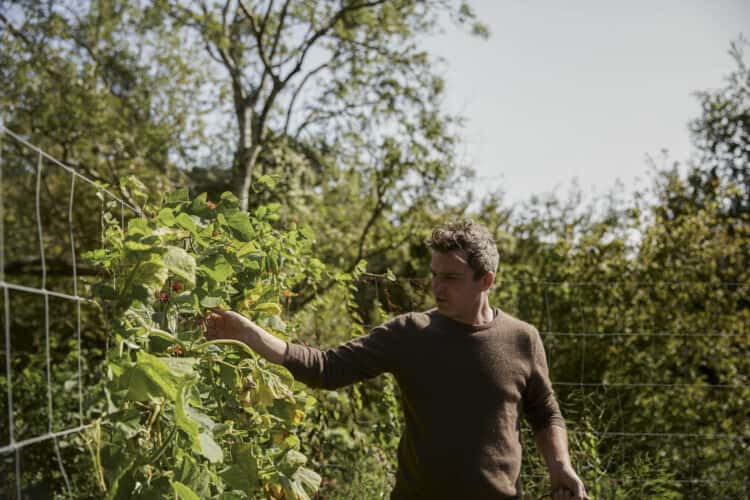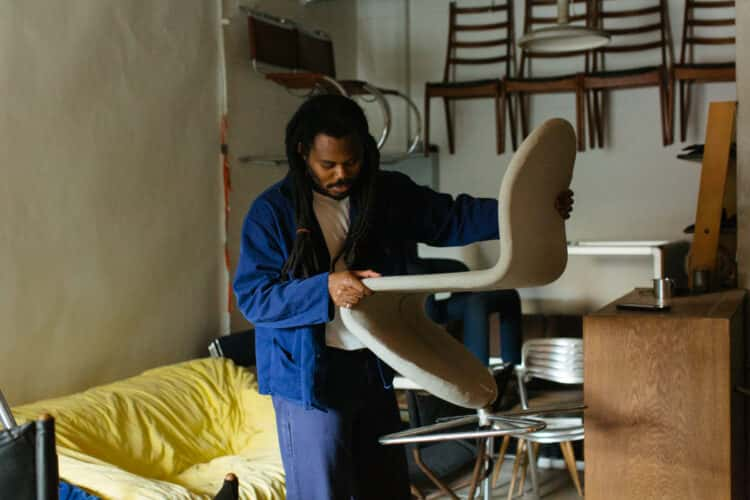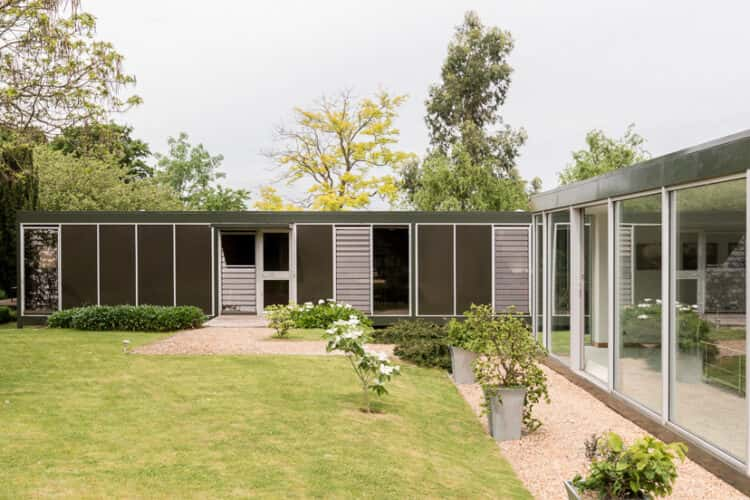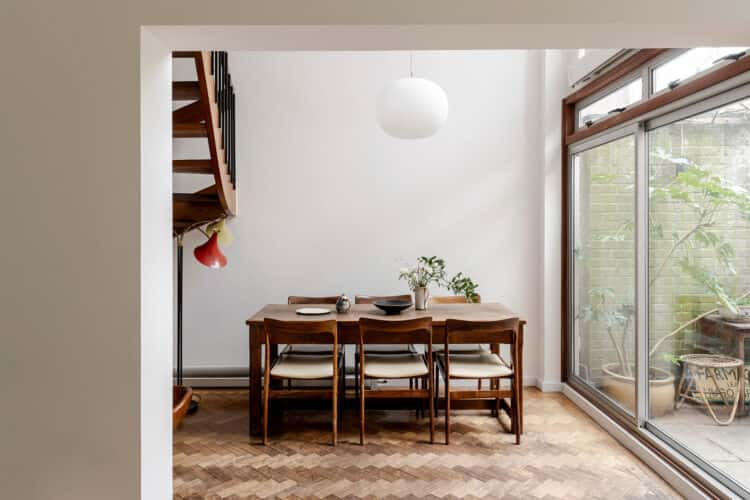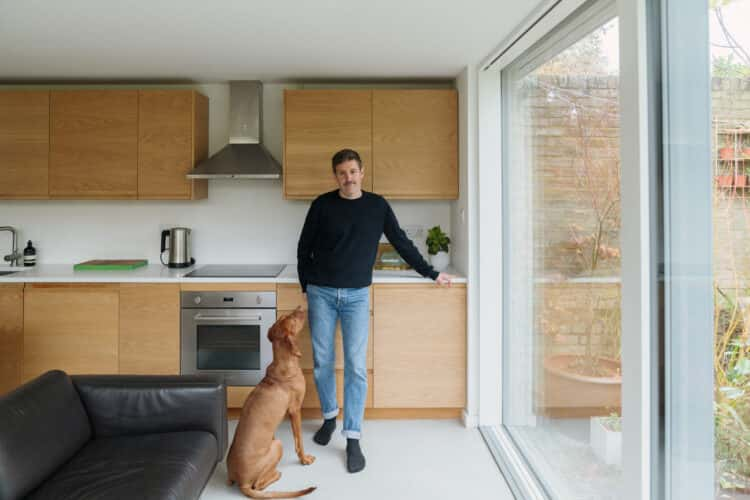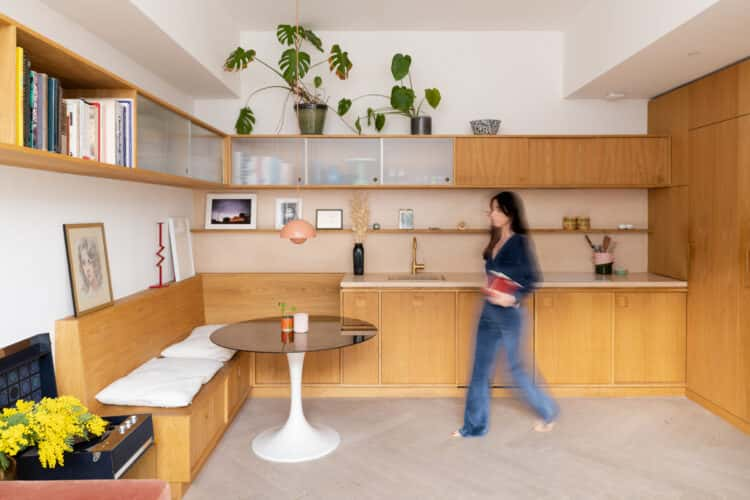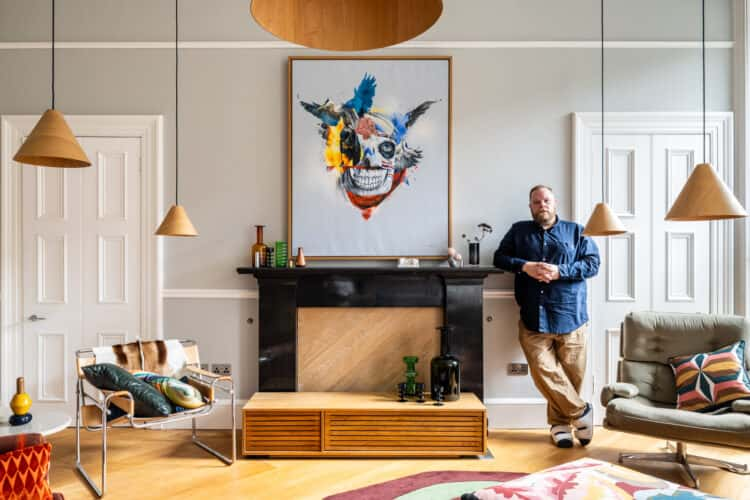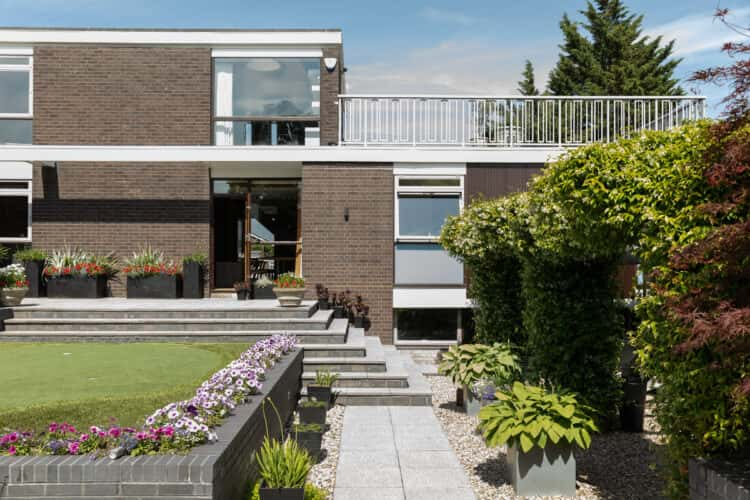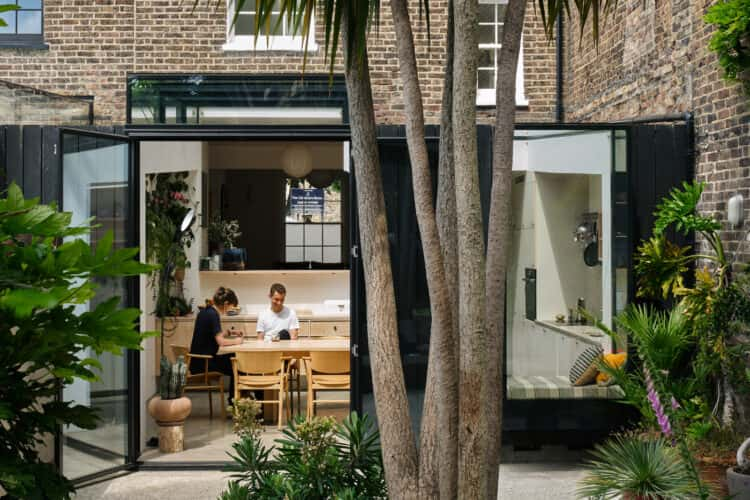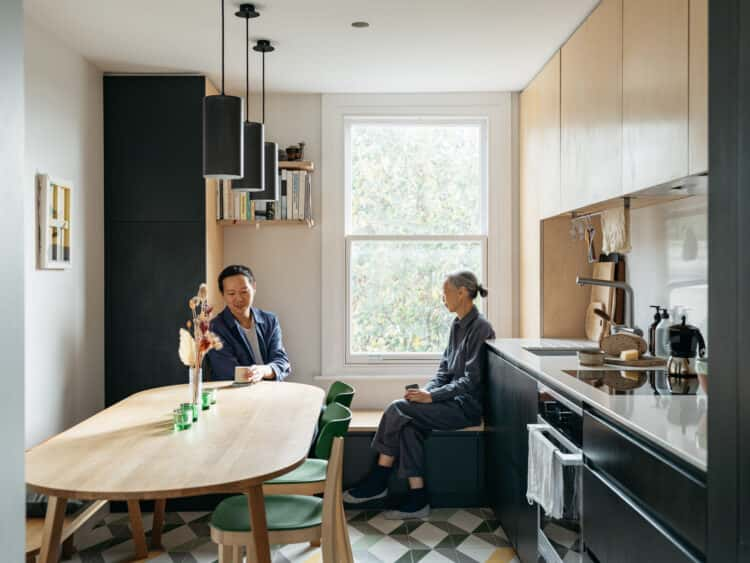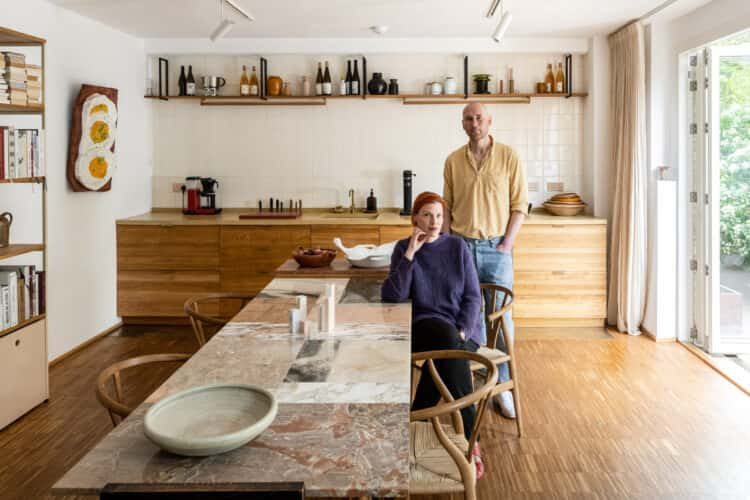Architect Marcus Lee on his self-designed warehouse-inspired home in Forest Gate, east London
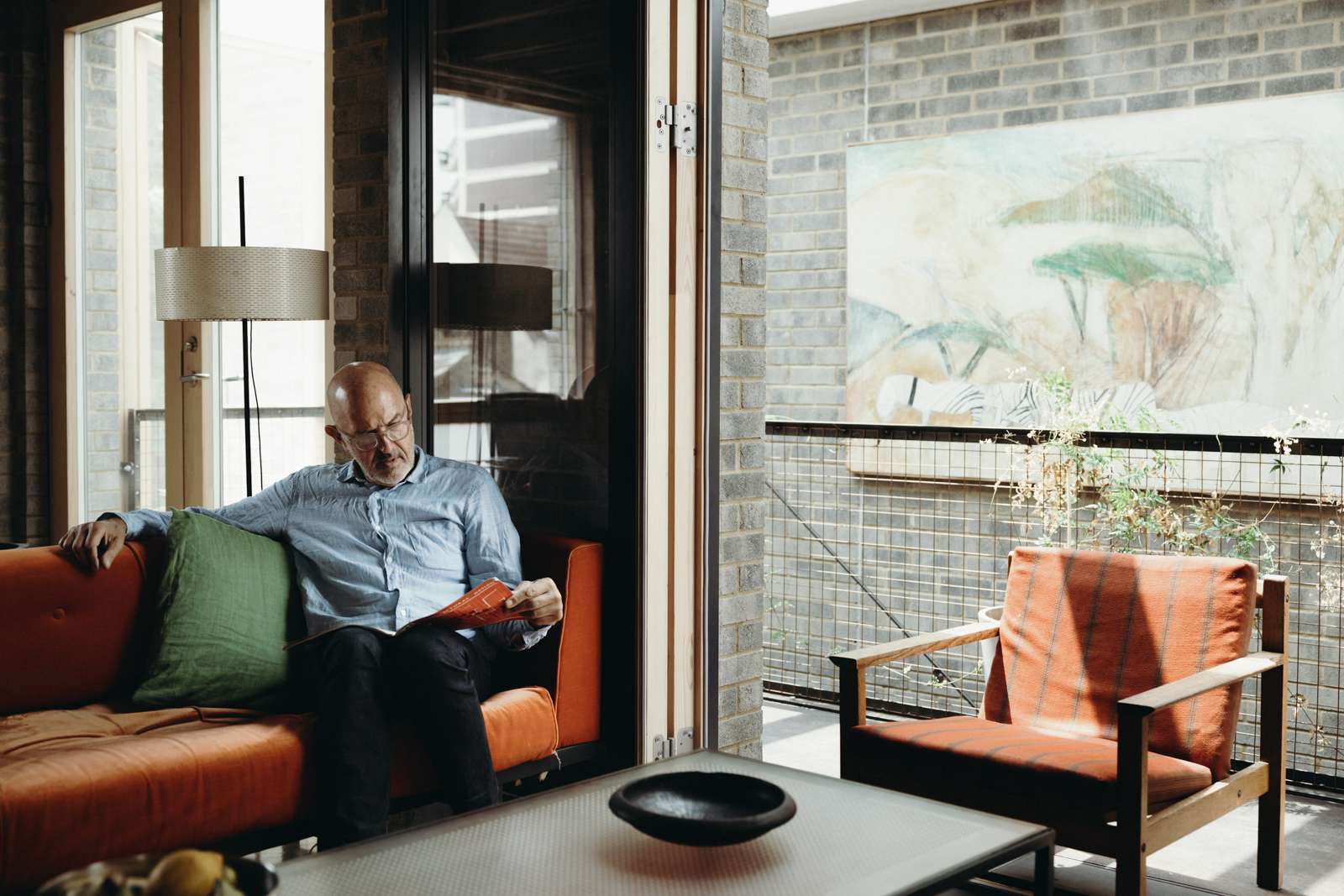
Marcus, who describes himself as a modernist, used an industrial material palette to build the space, which took three years to complete. He used bricks for the walls and concrete for the floor; elsewhere, metal staircases connect the three levels – each one designed to function differently. The ground floor is a workspace, the first floor is for sleeping, and the second, where Marcus spends most of his time, is for living: a light-filled space where, as he says, it all happens. As the home comes on the market, Marcus gives us a tour and shares his thoughts on good design.
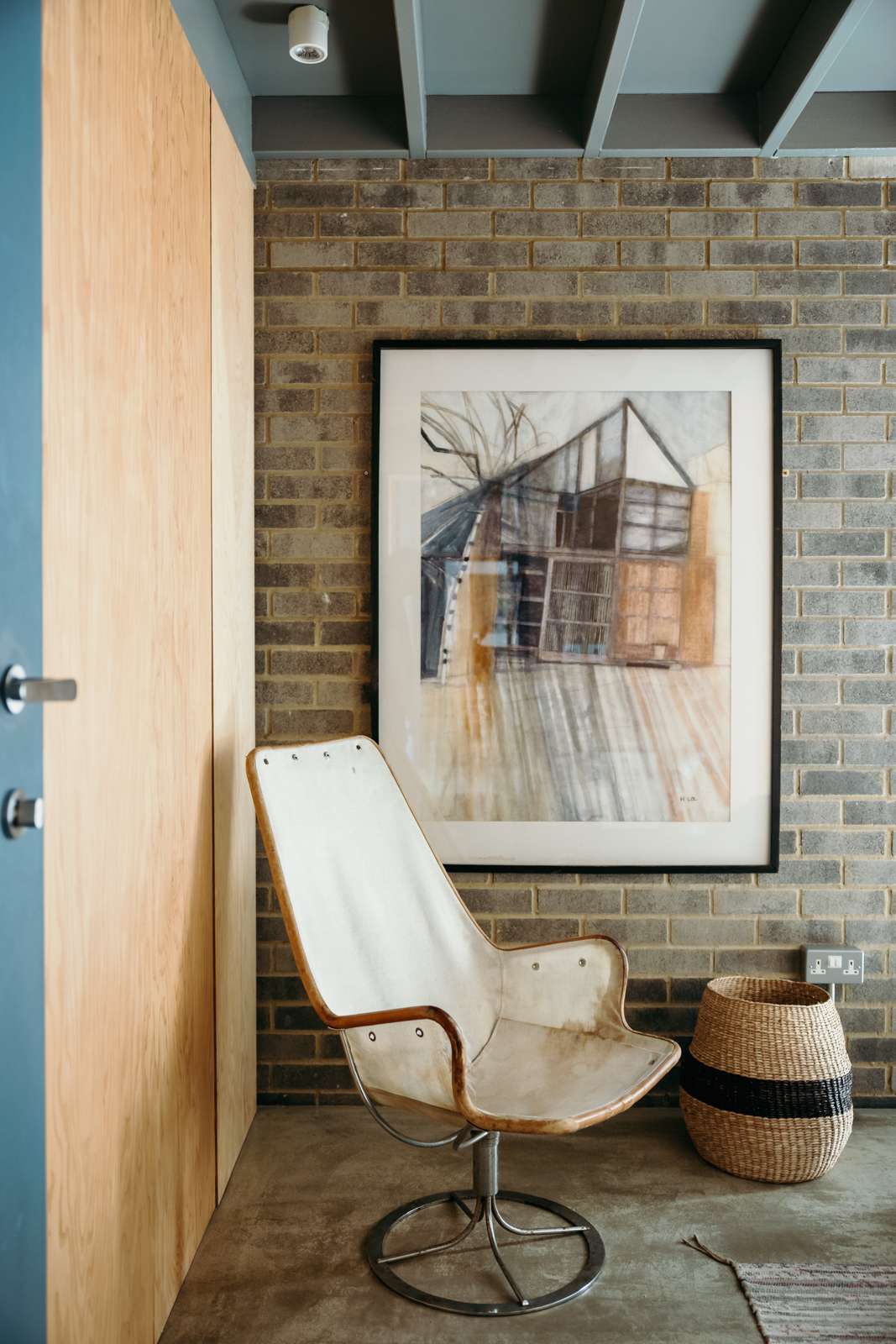
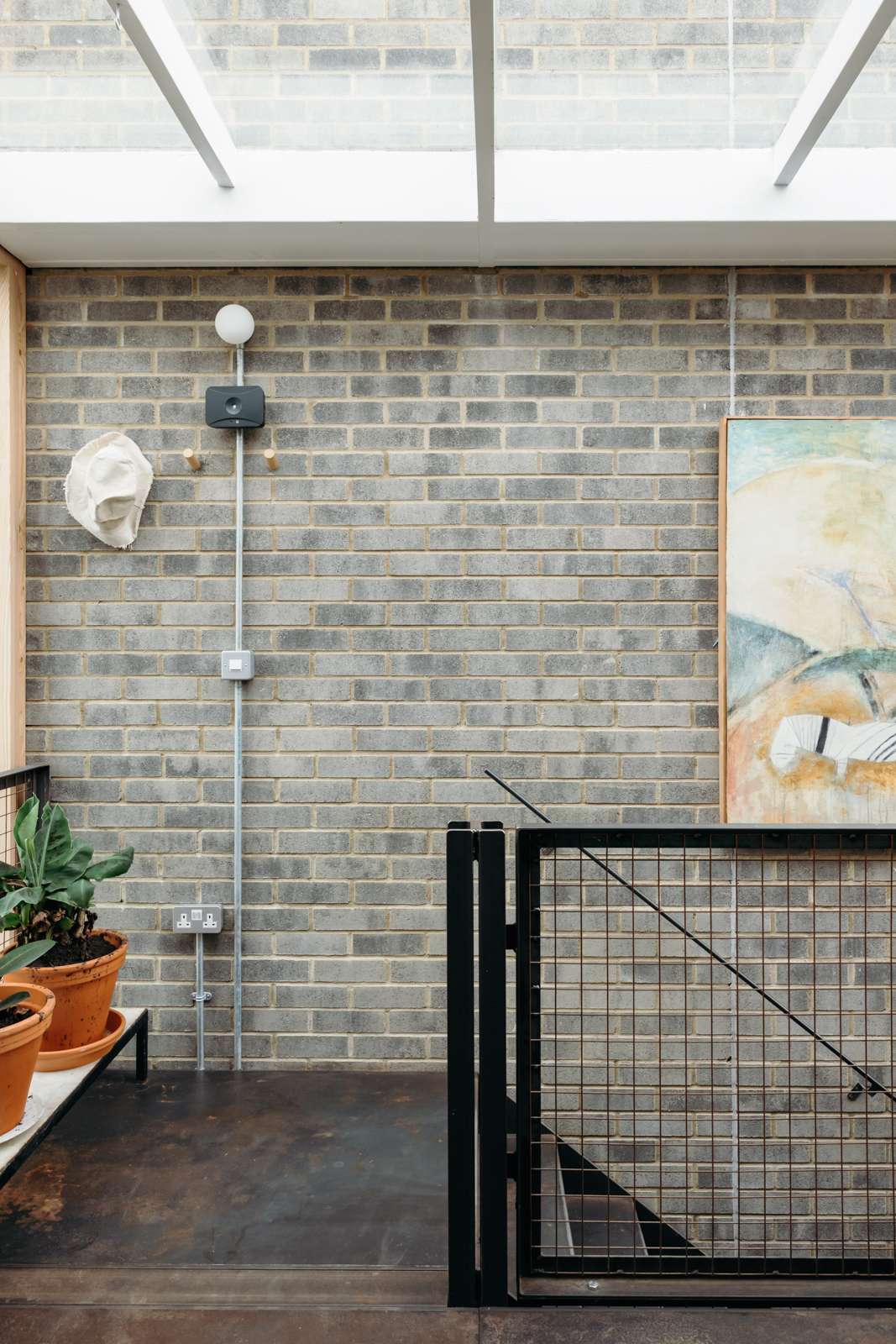
Marcus: “About five years ago, I bought an affordable plot down a mews in Forest Gate. There are a number of new buildings going up around here that are very individual and there’s quite a creative community. I built two houses here – a friend bought one and I’m living in the other. It’s been a long process. The main building work took place over the past three years, but it has been substantially complete for just over a year.
“My vision for this place is that of a contemporary warehouse. I’m a great fan of warehouses because they are so versatile: you can live in them, shop in them, work in them. I suppose it’s my background working for Richard Rogers – I’m interested in the idea of flexibility. This is a three-storey townhouse and is incredibly simple: it’s just a big space with a metal staircase, which is articulated in a kind of atrium – a winter garden of sorts.
“It was an early decision to use brick both inside and outside. I was very pleased to get this concrete brick, which has a mix of grey tones. Having it inside immediately gives the house a loft-like feeling. Every floor has a defined function, although each can be used independently. The kitchen and living space are on the top floor, above all the edginess. Sleeping is on the first floor and working is on the ground floor.
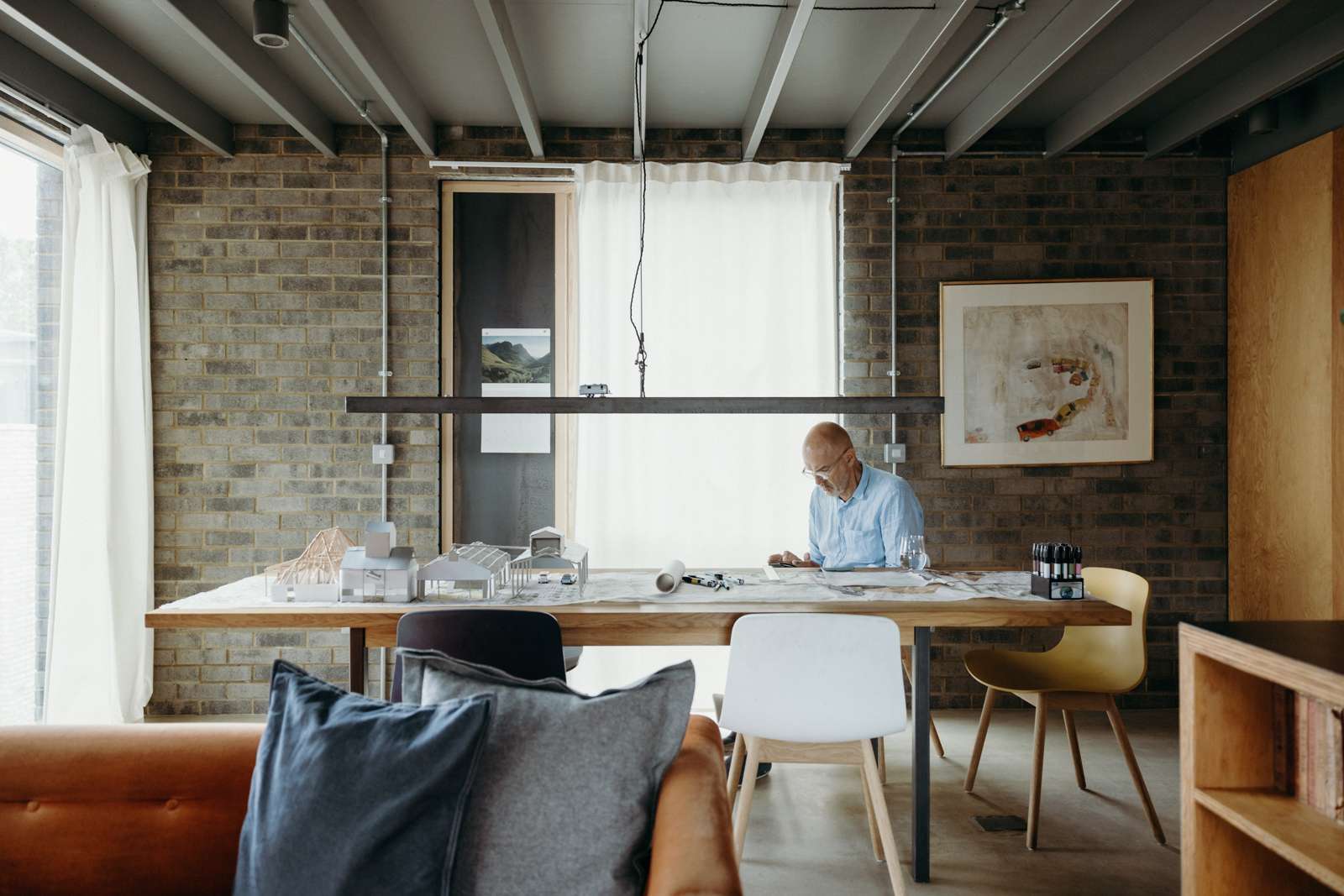
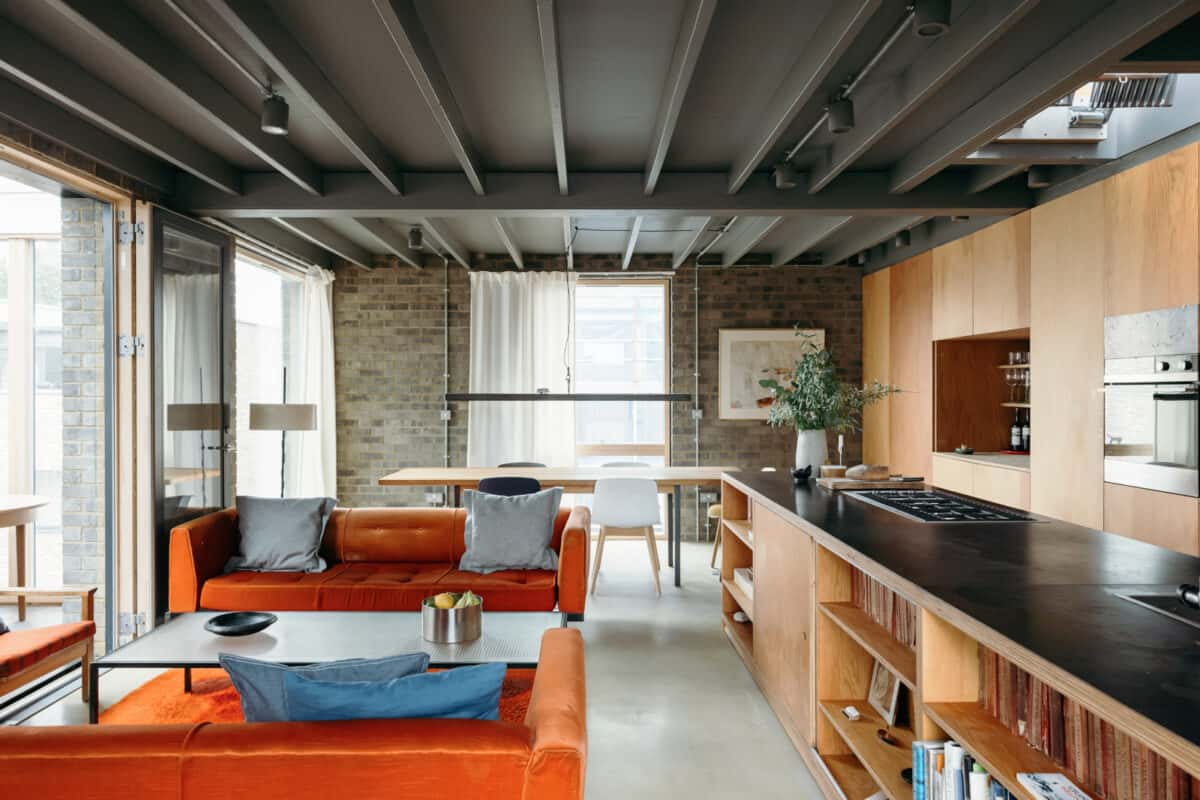
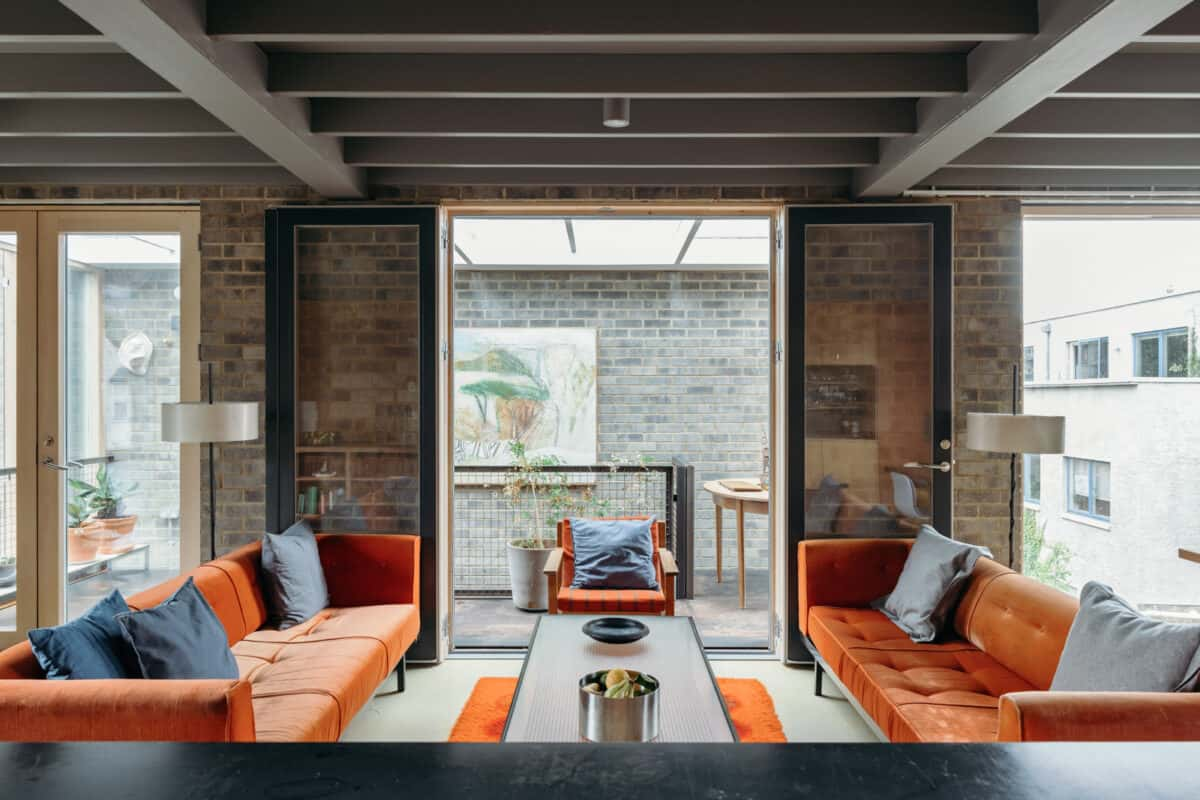
“Having a living space on the top floor allows for great light and views and, crucially, access to the roof terrace. I use it all the time. It’s remarkably private: there’s no one overlooking it, it’s been carefully planted and it has great views over London. It’s so nice to be out there: you suddenly get to see the sky. I actually have a rooftop rapport with a few of the other houses. It’s my outdoor space and having it feels like such a privilege.
“At the moment, the ground floor is a self-contained flat, but it can also be used as a workspace. Because I’m mostly here on my own, I live on the top two floors and rent the ground floor out to an interior architect. He lives and works there; he also has access to the courtyard garden.
“Being a modernist, and certainly a rationalist, I like the rigour of simple materials such as concrete, which I used for the floors. I decided to use Douglas fir plywood elsewhere, which has such a nice grain to it and contrasts wonderfully with the brick and concrete. Everything is slightly industrial, so the plywood lends warmth to this purposefully robust space. The kitchen island unit is more like a workbench – the worktop has a steel surface and it has a nice, tough feel about it.
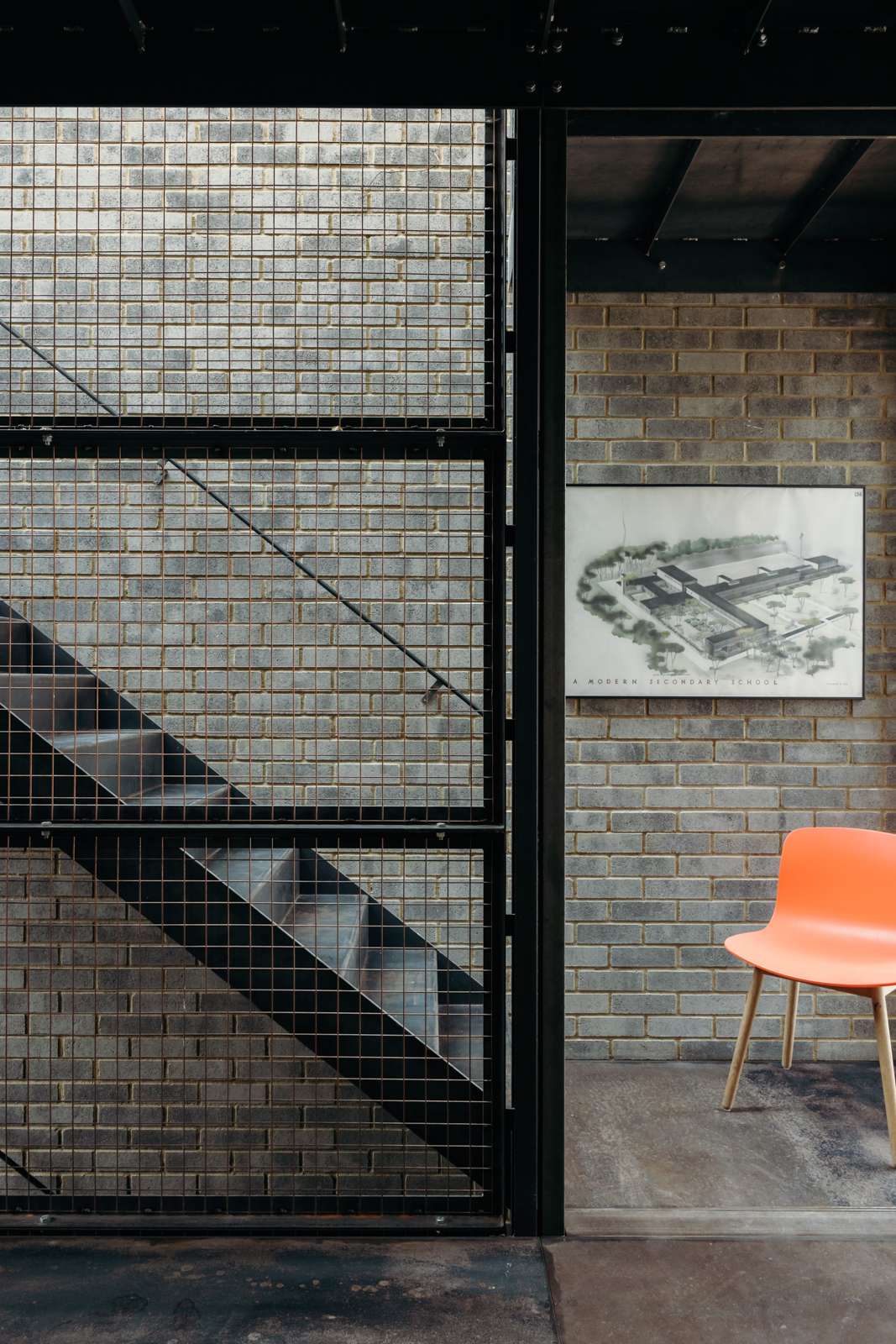
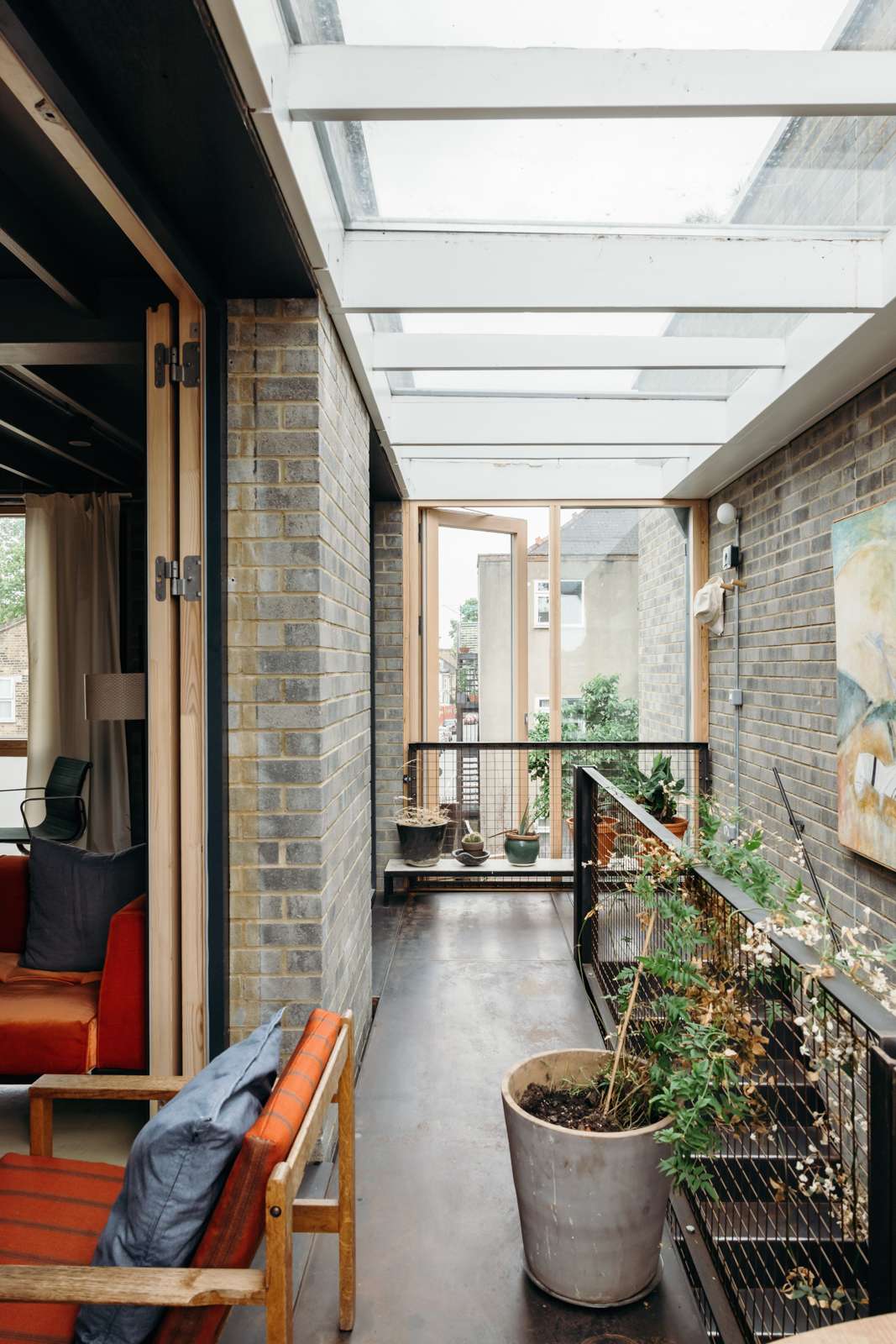
“I’m fairly used to working from home. I’m quite old-school and I sketch a lot. I’ve always worked at the kitchen table – I need a long table that I can spread out on. When I get a call, I like to move to the sofa. It’s all very flexible and comfortable.
“The open-plan living space is where it all happens. I like a mix of highly contemporary and classic pieces. My father was an architect and I’ve inherited two of his 1970s orange sofas, which he designed. I love his 1940s drawing of a school, which is now hanging by the stairs. I also love my lamps by modernist designers John and Sylvia Reid – those are some of my favourite possessions. I also have several of my sister Helen’s paintings here – she is a very accomplished artist.
“I’m not a fan of fashion really. I like discipline and order. I believe that good design enriches the home, but it’s also about the personal touches. For example, I have these red shilling guides to English towns, which have become a little like wallpaper.
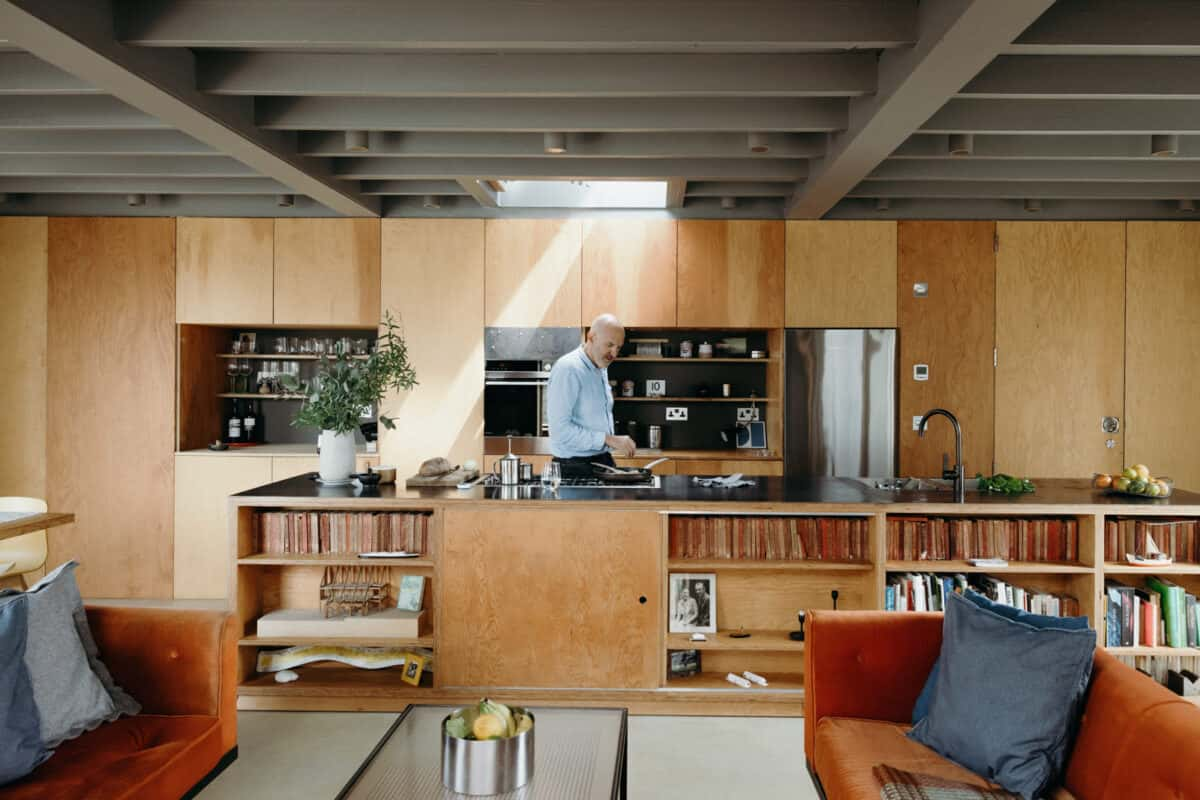
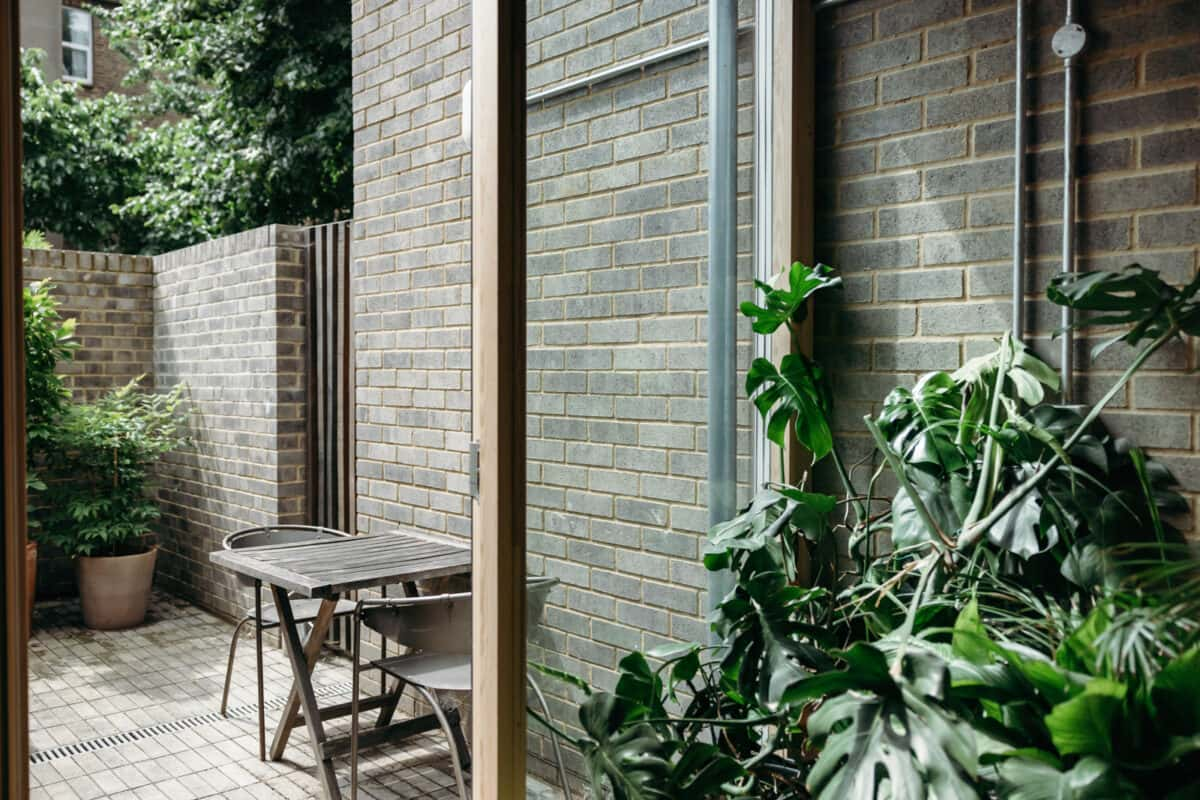
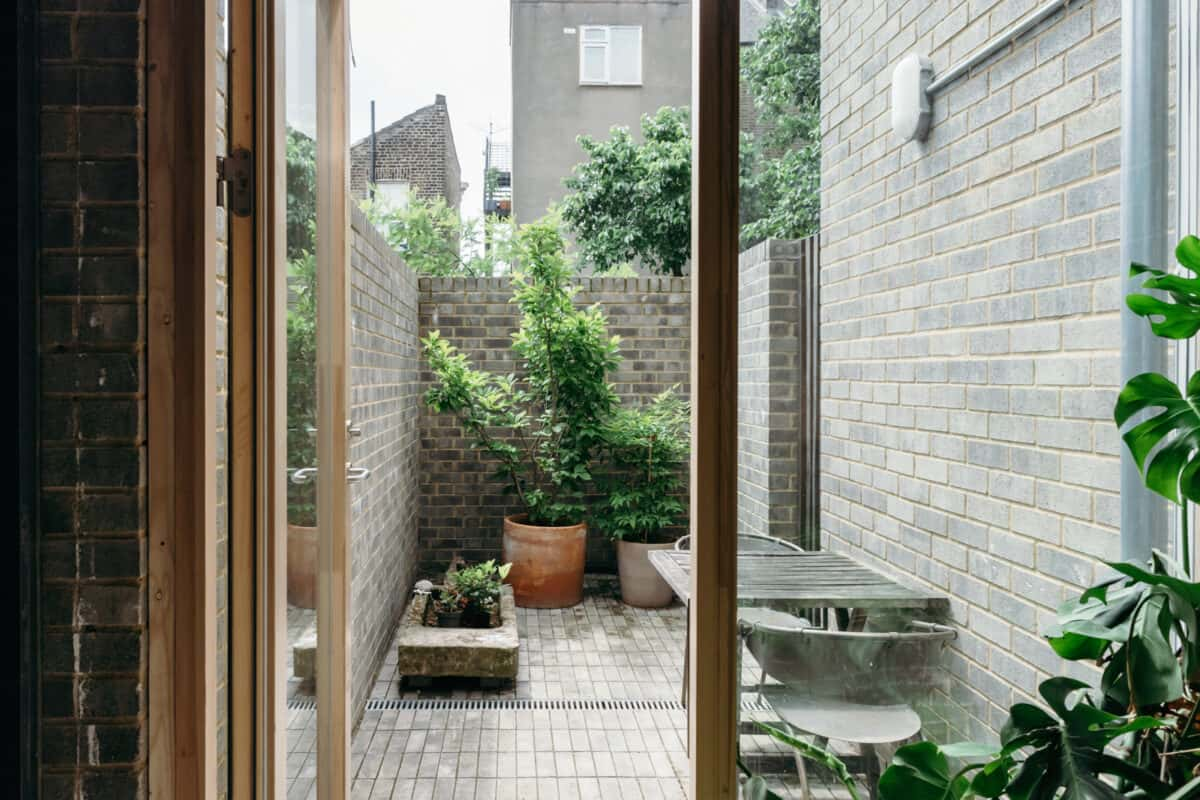
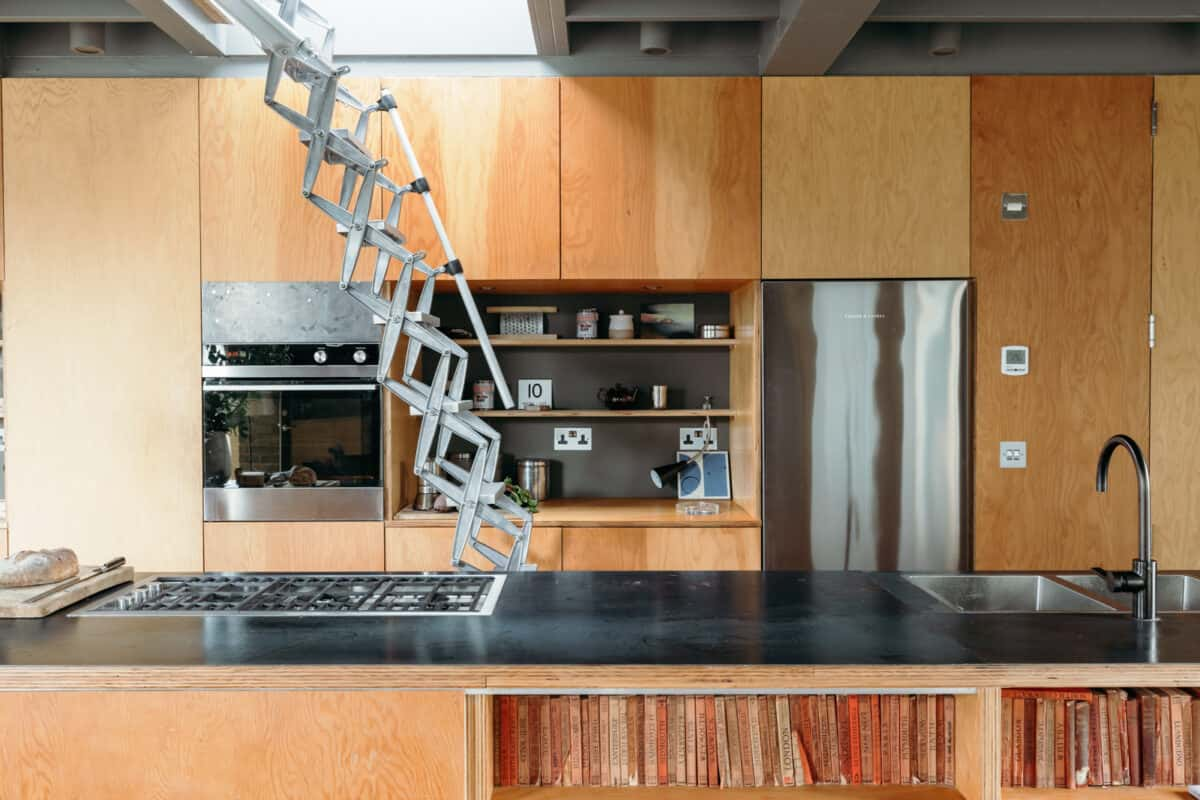
“I’ve also designed a light that goes over the dining table: it’s a piece of steel that relates to the staircase. If someone liked it enough, I’d be happy to let it stay. A home is about how you furnish it as much as the space itself. That said, the building is flexible enough to accommodate anyone’s taste in furniture and design.
“I have designed a very generous shower room, which can be accessed from both bedrooms. I purposely didn’t want to have a bath in there. My partner, Corinna Dean, is much more of a bather than I am, though, so I put a bath in the main bedroom, disguised by removable Douglas fir panels that sit on top.
“I made the decision not to have any load-bearing walls so it’s possible to take all the partitions out. The ground floor, which is open-plan, can be partitioned. The kitchen and shower rooms tend to be fixed in many houses but even they can be moved around here.
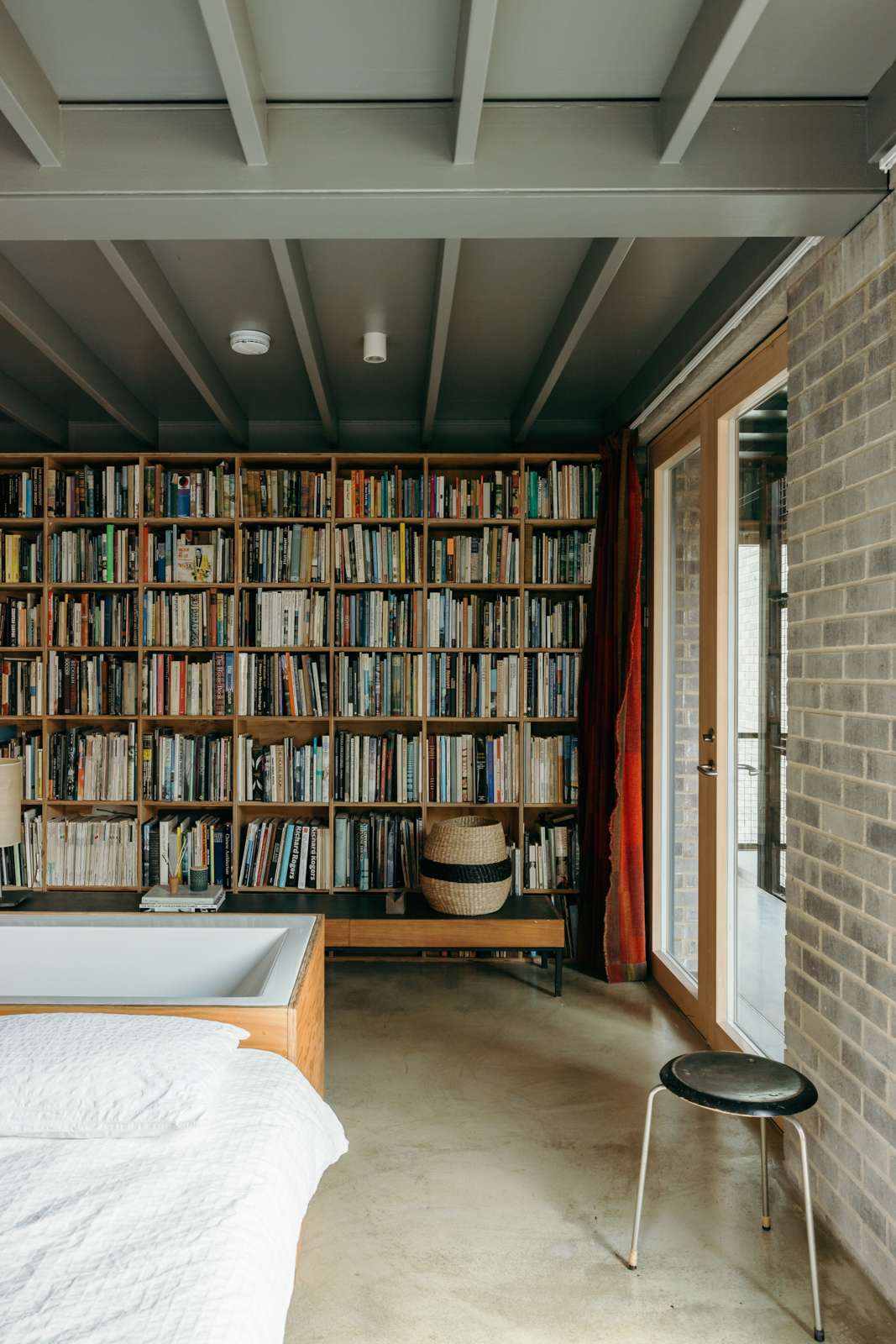
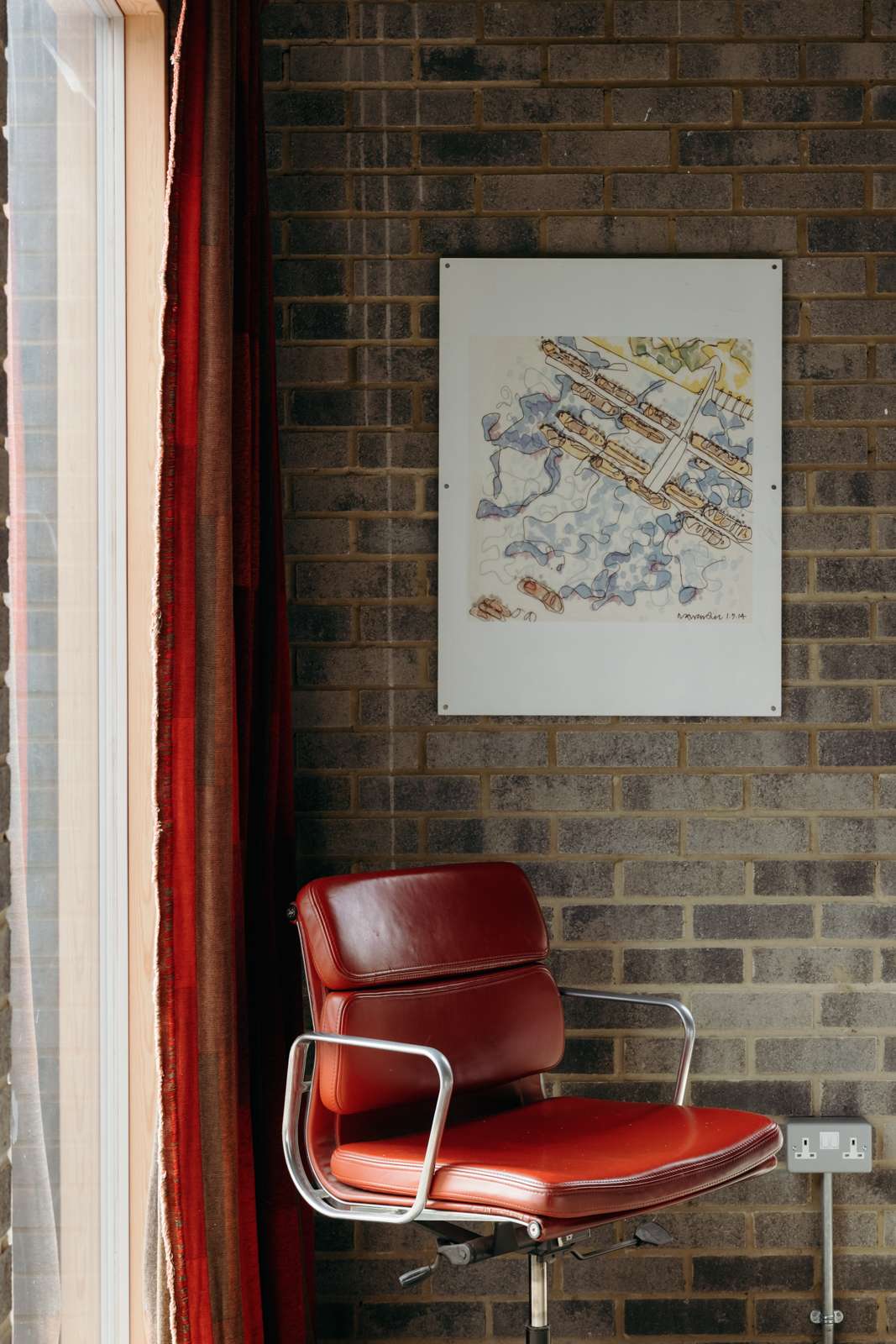
“Modern living has got to accommodate change. I’m a great believer in designing for change. Who could have predicted the impact of Covid on our working and living experience? Especially as kids get older, for example, you often find that you have to update interiors, change the furniture or even take walls out. So it should be about simplicity, comfort and flexibility.
“Forest Gate is going through a big transformation at the moment because it’s on Crossrail. There are lots of young families, professionals and creatives all moving here from Hackney. It’s something of a ripple effect. The area is very close to Stratford and all its benefits, as well as Wanstead Flats and Walthamstow. It’s right at the beginning of Epping Forest and it’s very well connected generally.
“Corinna and I have recently bought some rusty sheds in Suffolk, so we’re selling this to raise funds in order to convert the farm buildings. We’re also building a house in Scotland, on the Isle of Mull. I’ve built three houses now. Each one has been quite experimental and has taken a long time. My houses have always gone into good hands and I have kept in contact with the new owners. With this house, I know I’ve made something that someone can enjoy and it feels like it’s time to move on. I’m very excited about the next steps.”
